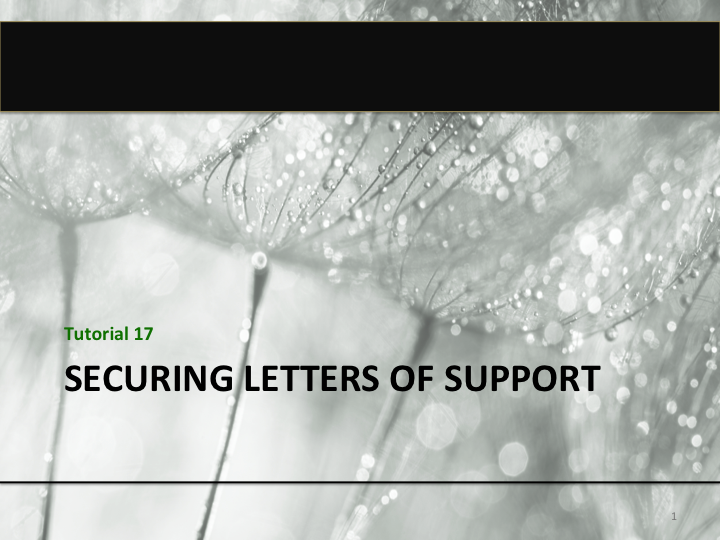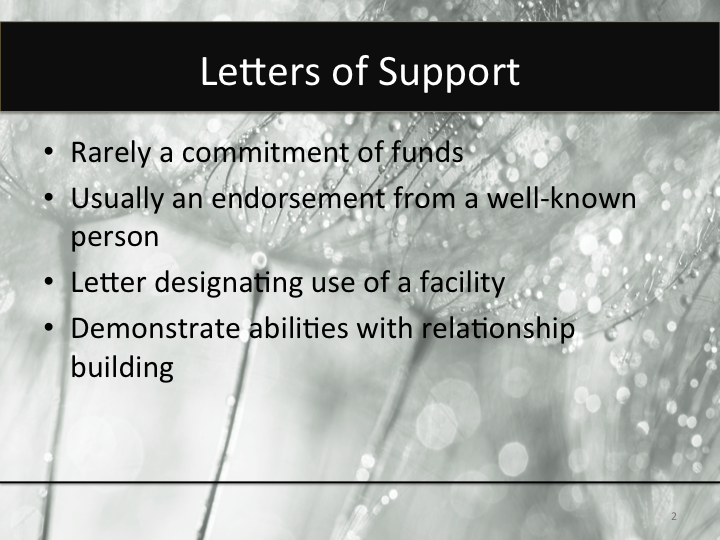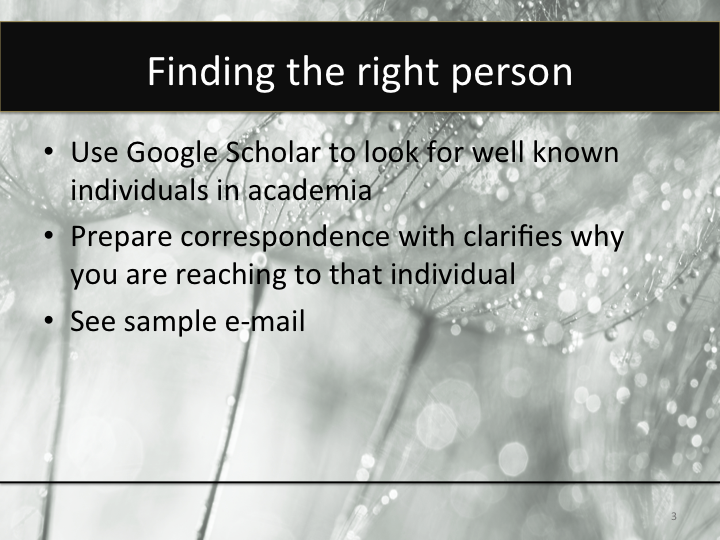Tutorial 17:
Securing Letters of Support
Agencies differ in the value that they and their reviewers place upon Letters of Support that a company may secure and include with their proposals. However, as letters of support have become a regular practice with some agencies, it will be discussed here. A Letter of Support is rarely a commitment of funds – however, in some cases is may be – such as when a state organization can bring leveraging funds to the table if the company secures an SBIR/STTR Phase I award. More commonly a letter of support is either an endorsement for the work OR an offer to provide facilities or data. Let’s discuss each of these.
Endorsements are helpful if they come from well-known people in the field – i.e. an industry expert who can attest to the significance of the problem and/or the potential value of the approach proposed by the small business. The industry expert could be an academic or be a key player in the target market. In order for the Letter of Support to have genuine value it should be from an individual or an organization with name-recognition.
Another type of support that an organization can provide is the use of their facilities at no cost for either the company or a third party to conduct a test. Related support is the provision of a data set or a coupon that can be used for testing. As with an endorsement letter of support, if the individual or organization is well known in the field, such a letter will catch the reviewer’s attention. More importantly efforts to secure such letters demonstrate that the company is exhibiting some of the behavior that is essential for relationship building – which is essential for successful commercialization.
Let’s explore how one goes about securing a letter of support? Most individuals looking to secure a meaningful letter of support – do not already have a relationship with the individual they are approaching. Therefore, the first question is how do you decide who to approach. There are three different paths depending on whether the person is from academia, industry, or a federal lab.
Let’s assume that you wish to receive a Letter of Support from a well-known individual in academia. If you are not already intimately familiar with the literature, you could use Google Scholar. It’s easy to navigate to this site by simply typing in “Google Scholar” in your browser.
In this example, let’s assume that you want to find the leading researchers working with battery separators for lithium ion batteries. The leading researchers could be working either in academia or a federal lab. In the associated demo, we used the phrase “Battery separator for lithium ion batteries” in quotes. Once the first batch of results was presented, we filtered the results and requested only those with citations and that they be sorted by relevance.
The result was a list with 647 articles. In the bottom row of each entry it indicated how many times a particular article had been cited. For example – the first one had been cited 393 times. That is significant. You also notice that the senior author’s name is underlined. If you click on the name, a bibliography appears of articles written by the author – indicating when they were written and the number of times each was cited. Mr. Zhang, the author is clearly well respected in this field. A citation index on this same page indicates that since 2010, his work has been cited on 4,980 occasions.
Proceeding in this fashion you can find the names of individuals that you may wish to approach regarding a letter of support. In reaching out to the individual you should indicate why you are reaching out to them and what it is that you want. You will also need to divulge some information about what you are doing so that they can assess whether or not they believe that your work is innovative. Unless you are willing to share some information, you should not pursue this path. The nature of the information that you share is a clarification of the problem you are tackling and what it is you are trying to ascertain. If you have already written your public abstract – it is suggested that you excerpt information from that. You don’t need to divulge technical details regarding what you are doing – but be prepared for the fact that they may ask. A sample introductory e-mail is included in this module as a template.
The approach to industry would be different and more circumspect. It would be wise to consider reaching out to industry as a step in the process of developing a relationship with a potential licensee or partner. If possible in anticipation of submitting an SBIR or STTR proposal in the future, we would recommend attending conferences where companies in which you have a potential interest are making presentations. Listen to their presentations and then follow up at the conference with questions or contact them afterwards and begin to develop a relationship. Building on the battery separator application, we entered the company name Celgard and the word “conference” into the Google search bar. This yielded Celgard’s events calendar with a link to an upcoming conference in Florida. If possible, using this type of strategy seek out key conferences and plan to attend. Your mission in attending the conference is to listen to the presenters, learn what they are doing, and assess if you may wish to reach out to them in the future. As it is unlikely that you would find a conference to attend while the DOE Funding Opportunity Announcement is open, this approach is part of a longer term strategy. If you find a person’s work to be of particular interest, after their presentation introduce yourself, and provide them with a copy of your business card. In the future, you can then follow up with them by e-mail. The sample e-mail provided could be easily modified for this application.
Quiz: Tutorial 17: Securing Letters of Support
1
Which specialized Google search engine is useful for finding industry and academic experts?
Nice Work
Try Again
2
To search a phrase in Google, what punctuation do you put around the phrase?
Nice Work
Try Again
3
In Google Scholar which element of the citation is the best indicator of being an industry expert?
Nice Work
Try Again


